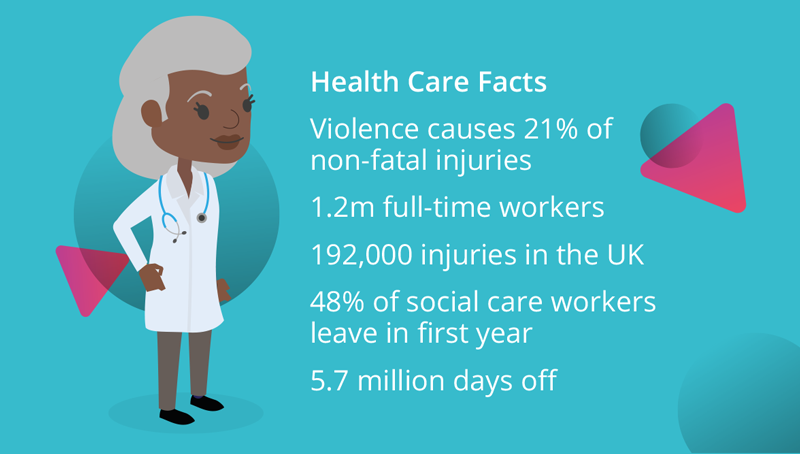How safe is the health and social care sector?
The NHS in England employs the equivalent of around 1.2m full-time workers, while independent healthcare providers employ the equivalent of a further 46,000. You’d think with all those doctors, nurses, paramedics and other industry professionals on hand that this would be a safe sector in which to work. Sadly, that’s not always the case.
According to the Health & Safety Executive, around 192,000 people in Great Britain’s human health and social work sector suffer some form of work-related illness each year. A further 72,000 sustain non-fatal injuries each year. Worst of all, ‘Acts of Violence’ are the third most common cause of non-fatal injuries.
In fact, violence causes 21% of non-fatal injuries in the health and social work sector; not far behind ‘lifting and handling’ at 25% and ‘slips, trips and falls’ at 27%. According to a 2013 report for Skills for Care, 56% of social care staff reported experiencing physical abuse at work, often from troubled patients.
This takes an awful toll on the mental and physical health of many employees. Front-line health and social care staff, particular lone workers, can suffer from the fear of physical and verbal assault, even if they’ve never experienced it directly. Of the 5.7 million working days lost by the sector to illness and injury each year, nearly 3 million are lost because people are suffering stress, depression or anxiety.
That has a catastrophic effect on mental health. Public Health England reported in March 2017 that care workers of both genders face a suicide risk that is almost twice the national average. The risk among female nurses is 23% higher than the national average.
As well as the human cost, there is a huge cost to the industry – and not simply through lost working days. An ONS report in March 2017 revealed that 48% of care workers leave the industry within a year of starting. The turnover rate for social care nurses is 36% a year – that means providers have to replace a third of their workers every year.
How can health and social care providers take better care of their workers?
The first thing managers have to do is commit to putting employee wellbeing at the heart of their business strategy, rather than as some ‘nice to have’ add-on. They have to look at working practices and conduct rigorous and regular risk assessments to understand the threats healthcare employees face to both their mental and physical health. They then have to act on their findings – and that starts with training managers and employees to understand how to reduce the risks of harm.
Public Health England has designed suicide prevention toolkits to protect employees in the workplace. Their aim is to help managers build a culture that champions good mental and physical health. This is also part of the motivation behind Safepoint’s lone worker solution. One way to start improving your health and safety culture is to show employees you really care, that you ‘have their back’ no matter where or when they are at work.
If you are a healthcare employer or contractor, register now to start easily protecting your staff.


